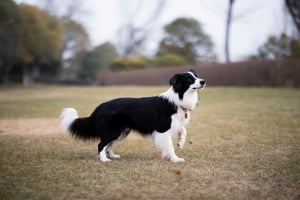Dog pulling on the leash is one of the most common issues pet owners face. If your pup is...
The Best Dog Leads to Stop Pulling
The best dog leads for stopping pulling are those that are comfortable for the dog and easy to use for the owner. From retractable leashes to no-pull harnesses, there are a variety of products available to help stop a dog from pulling on the leash. This article will discuss the different types of dog leads and harnesses available and how to choose the best one for your dog.
Retractable Leashes
Retractable leashes are a popular choice for dog owners who want to give their pet some freedom while still maintaining control. The leash is attached to a handheld spool, and the length of the leash can be adjusted to give the dog some extra room to roam. This type of leash is best for larger, more relaxed dogs since the retractable leash gives the dog the chance to explore without being too restricted.
Pros: Retractable leashes allow the dog to roam freely while still remaining under control, and they are fairly easy to use.
Cons: Retractable leashes can be dangerous if used incorrectly, and they can be difficult to control in tight spaces.
No-Pull Harnesses
No-pull harnesses are designed to help reduce a dog’s tendency to pull on the leash. These harnesses have a loop around the dog’s chest that is connected to the leash, and when the dog pulls, the loop tightens and applies pressure to the dog’s chest, which encourages the dog to stop pulling.
Pros: No-pull harnesses are easy to use and can be very effective in reducing a dog’s tendency to pull.
Cons: No-pull harnesses can be uncomfortable for the dog if used incorrectly, and they can be difficult to put on some dogs.
Head Halters
Head halters are similar to no-pull harnesses, but they are designed to fit around the dog’s head instead of the chest. When the dog pulls on the leash, the halter applies pressure to the dog’s muzzle, which encourages the dog to stop pulling.
Pros: Head halters are fairly easy to use and can be very effective in reducing a dog’s tendency to pull.
Cons: Head halters can be uncomfortable for the dog if used incorrectly, and they can be difficult to put on some dogs.
Front-Clip Harnesses
Front-clip harnesses are designed to be used with a leash that clips to the front of the harness, rather than the back. This type of harness is designed to redirect the dog’s attention away from the leash and back to the owner when the dog starts to pull.
Pros: Front-clip harnesses are easy to use and can be very effective in reducing a dog’s tendency to pull.
Cons: Front-clip harnesses can be uncomfortable for the dog if used incorrectly, and they can be difficult to put on some dogs.
How to Choose the Best Dog Lead to Stop Pulling
Choosing the best dog lead to stop pulling can be a difficult decision. To make the process easier, consider the following factors:
- Size: Make sure the lead is the right size for your dog. The leash should be comfortable for the dog and easy for the owner to handle.
- Type: Consider the type of leash that will work best for your dog. Retractable leashes are good for larger, more relaxed dogs, while no-pull harnesses and head halters are better for smaller, more active dogs.
- Material: Choose a leash made from a durable material that is comfortable for the dog. Leather and nylon are both popular choices.
Once you’ve considered these factors, you’ll be ready to choose the best dog lead to stop pulling. Be sure to read reviews of the different products available, and look for one that is comfortable for your dog and easy to use for you.
Conclusion
The best dog leads to stop pulling are those that are comfortable for the dog and easy to use for the owner. Retractable leashes, no-pull harnesses, head halters, and front-clip harnesses are all good options, but it’s important to choose the right type of lead for your dog. Be sure to consider the size, type, and material of the lead before making your decision, and read reviews to make sure you’re getting a quality product. With the right lead, you’ll be able to keep your dog from pulling on the leash and enjoy your walks together.



